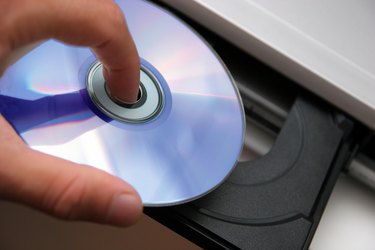
DVDs are encoded in two formats: PAL and NTSC. The version used depends on which part of the world the DVD comes from. If you have a region-specific DVD player locked to one format, it won't be able to play DVDs in the other format. By having a multi-format DVD player that can decode both formats, you can use DVDs from anywhere in the world.
Multi-Format
Video of the Day
A multi-format DVD player is also called a multi-region or region-free player. This means the device can play both DVD encoding formats; so, if you buy a DVD in Europe or North America, the player will be able to handle both types. If your player is region-specific, you will not have the option of playing DVDs encoded in another format.
Video of the Day
National Television System Committee (NTSC)
The NTSC format is used most commonly by North American DVD players. It has a frame rate just shy of 30 frames per second. NTSC has some problems with color accuracy over time, which may require adjusting the "Tint" or "Hue" settings on an NTSC TV. When using "S-Video" systems, these color distortions disappear.
Phase Alternating Line (PAL)
The Phase Alternating Line (PAL) format is used most commonly by European DVD players. This format was developed after NTSC, specifically to address the problems that were inherent in the first format. It was successful in this endeavor, at the cost of vertical color frame resolution. However, since the human eye lacks the capacity to see the difference, the loss is moot.
Cost
Multi-format DVD players capable of playing both DVD encoding formats are not particularly expensive. Unless you are looking for high-end equipment, you won't typically pay more than $100 for a multi-format player.